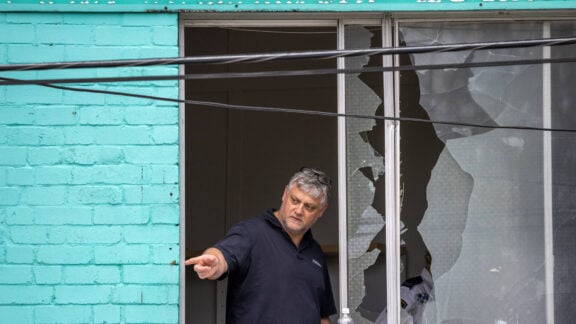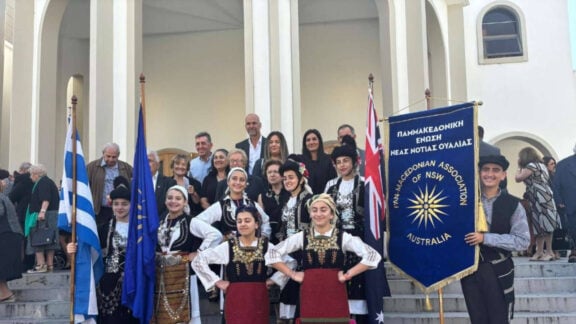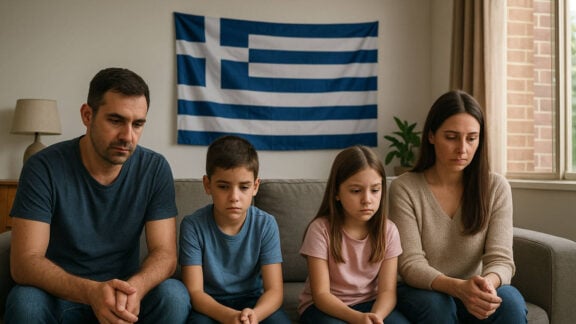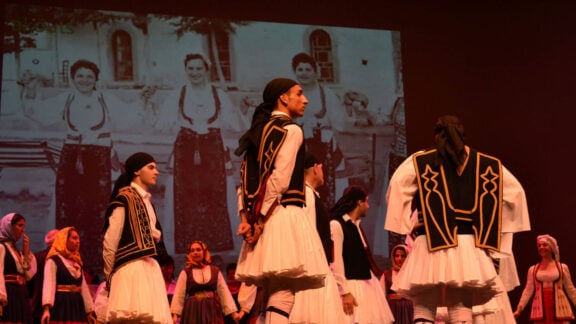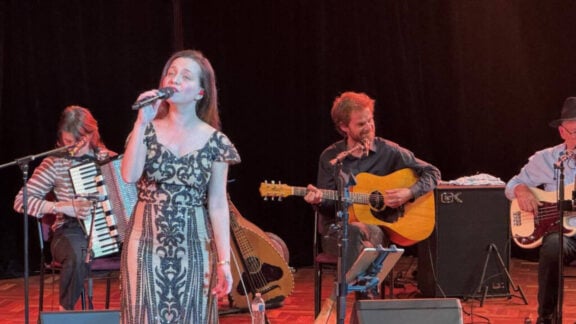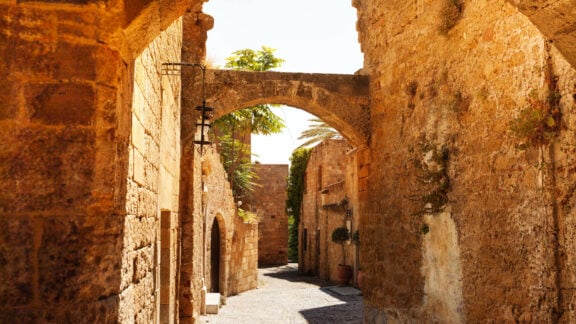Do you remember professor Julius Sumner Miller?
‘Why is it so?” he would ask.
Have you ever had a ‘Why is it so’ moment?”
I have.
Allow me to tell you about one of them.
My older sister Agapi was nine years of age when she contracted measles.
My mother Eleni had left strict instructions with the family elders that Agapi was not allowed any solid food for twenty-four hours, water only. Tragically, the elders gave her food. Her allergic reaction to the food caused Agapi to fall into a coma.
Mother arrived home late from working in the fields. Her white purdah still covering her head, she found her beautiful child alone in a darkened bedroom, in a state of unconsciousness. Then suddenly, after three hundred and sixteen million beats, in her nine short years, her heart stopped beating.
“Oh no Agapi! No! God help me, no!” screamed Eleni, her daughter’s limp body lying across in her unwashed soiled arms, her blistered hands wiping away the flow of tears from her eyes.
Eleni went into emotional free fall. She had a mental and physical breakdown.
“Why did my sister die? Where’s my sister buried?” my inquisitive ten year old brain asked my mother. I suspected something bad had happened because she changed the subject.
“She was the most beautiful child, her pale blue eyes looked at you and glowed with love.”
“What happened to Agapi mum?” I asked again.
My mother’s way of dealing with the tragedy was to put it behind her, not pretending it didn’t happen, just not talking about it. It was brutally painful for her, devastating every fibre in her body.
In July 2016, I returned to my village in northern Greece in search of my sister’s grave. I met with Maria, the owner of the taverna, the local meeting place for the village.
“My name is George Kyriakou. I was born in the Kyriakou house up there,” I said, pointing to my childhood home. I told her that I was looking for someone in the village who could help me find my sister’s grave.

Maria asked, “What’s her name?”
“Agapi,” I replied.
“Wait here a moment.”
Maria returned with an elderly lady. This dear old soul had the most weather beaten face I’ve ever seen; her wrinkles were deep and baked in by the sun, her veins in her hand were like ropes. She wore black clothing and a pair of old, worn scuffs. “Are you George from the Kyriakous?”
I nodded my head, acknowledging her question. “Yes, I am.”
“My name is Eleni, like your mother,” she said to me. “I also remember your beautiful sister Agapi, your mother, father Zissis and all the Kyriakous. How can I help you?”
“I’m looking for my sister Agapi’s grave. Do you know where it is?”
“Come with me.” she said.
The grounds surrounding the two hundred and fifty year old stone built Assumption of Mary church were used as the local cemetery. Many of the headstones were over 200 years old. This frail old woman took me to the back of the church, stopped, and pointed to a spot about three metres from the east corner of the building. “Your sister Agapi is buried here,” she said.
I was devastated. The spot she pointed to was barren, covered in pebbles, broken glass and weeds waist high. There was no cross or marker to indicate my sister, or anybody else, was buried there. Eleni was however absolutely positive about the position my sister was buried, as there was a headstone nearby with the name of my Great-Grandfather Filko, who died in 1933, at 74 years of age.
“This is the area all the Kyriakous are buried.” It was the family plots area.
I headed back to the taverna. Maria had a table for me in the courtyard, under the willow tree next to the river so I could appreciate the setting. The elation of finding my sister’s burial site had a profound effect on me. For over sixty years I had harboured a desire to know what had happened to Agapi. In that moment I was overcome with emotion, erupting like a dormant volcano, and I sobbed uncontrollably.
“I called my younger sister Sia. “I want you to do something for me. I’m leaving you €300 to arrange for a marble cross to be erected where our sister Agapi is buried.
Weeks later Sia telephoned me. In Melbourne it was miserable, cold, rainy Saturday night.
“Hi George, it’s Sia.” She was sobbing.
“What’s wrong, has someone died?” I asked.
“No,” she replied. “I’ve got something to tell you. You have changed my life. ”
She told me that an unbelievable thing happened when the stonemason, Christos Setcos, had come to erect the marble cross on Agapi’s grave.
“Christos asked me, where I wanted the cross placed. I told him to place it about three metres from the corner of the church building.”
Christos picked up his shovel to dig a hole for the concrete slurry for Agapi’s cross. He had dug a hole approximately forty centimetres deep and sixty centimetres wide when his shovel created a spark after hitting something solid. He looked at the engraving on the revealed flat paved stone, and then stood upright. He had a fixed stare, “You’d better come and take a look at this Sia,” he said.
‘Agapi Kyriakou 1950’ was engraved on the stone. We had finally located the exact spot of Agapi’s burial headstone.
“After 66 years of searching we finally found Agapi. George you have corrected a wrong. This is one of the best days of my life.”
A marble headstone is now erected exactly where our sister had lain buried and unidentified for such a long time.
My sister’s emotional recollection of what had transpired, the elation and significance of the find, finally hit me. What I felt was incredible.
“Welcome home Agapi, welcome home my dear sister. I love you.”

